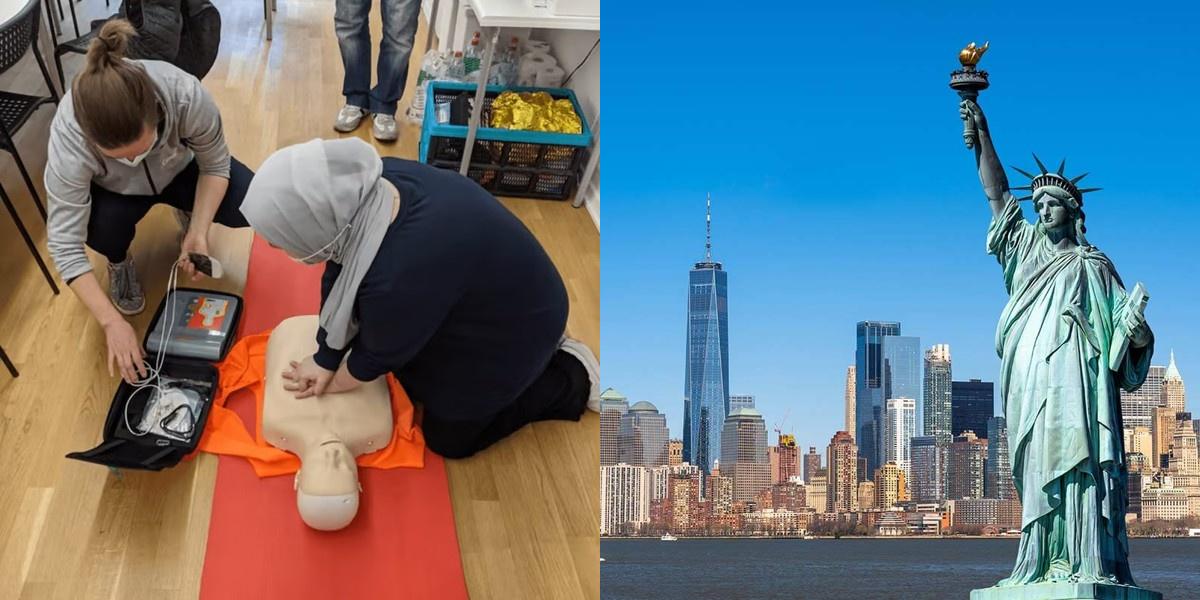How to Become a Paramedic in New York (2025)

Paramedics are the highest-trained emergency responders, trusted to make life-or-death decisions in seconds. In New York, becoming a paramedic requires completing advanced medical training, earning national certification, and securing state licensure through the New York State Department of Health (NYSDOH).
This guide explains every step from training and certification to licensing, salaries, and career opportunities.
How Long Does It Take to Become a Paramedic in New York?
The full process takes 1.5 to 3 years, including:
- 6 months for EMT-Basic certification
- 12–24 months for Paramedic training
- Testing and state licensure periods
Accelerated programs may shorten training to around 12 months for full-time students.
How Much Does Paramedic School Cost in New York?
Tuition varies by institution and degree level:
- Certificate Programs: $5,000 – $12,000
- Associate Degree Programs: $10,000 – $20,000
Additional costs include books, uniforms, clinical fees, and NREMT exam registration (~$98).
Financial aid, workforce grants, and GI Bill benefits may apply.
How Much Do Paramedics Make in New York?
According to the Bureau of Labor Statistics, paramedics in New York earn an average of $69,010 per year ($33.18 per hour).
Earnings depend on experience, employer, and specialization — flight paramedics, supervisors, and urban EMS professionals often earn $80,000+ annually.
Career Paths and Opportunities after Becoming a Paramedic
Becoming a paramedic opens up a wide range of career paths and opportunities. Here are some of the career options you can explore after becoming a paramedic:
-
Emergency Medical Services (EMS): Many paramedics work in the field of EMS, responding to emergency calls and providing pre-hospital care to patients. EMS agencies can be found in both urban and rural areas, and paramedics may work for public or private organizations.
-
Fire Departments: Paramedics often work for fire departments, providing emergency medical care alongside firefighters. In many fire departments, paramedics are cross-trained as firefighters and respond to both medical and fire emergencies.
-
Hospitals: Some paramedics choose to work in hospitals, providing emergency care in the emergency department or working as part of a critical care transport team. In this setting, paramedics may work closely with other healthcare professionals, such as nurses and doctors.
-
Flight Paramedics: Flight paramedics work on medical helicopters or fixed-wing aircraft, providing emergency medical care to patients who need to be transported to specialized medical facilities. This career path requires additional training and certification.
-
Education and Training: Experienced paramedics can pursue careers in education and training, teaching future paramedics or providing continuing education courses for practicing paramedics.
-
Management and Administration: Paramedics with leadership skills and a strong understanding of EMS operations may choose to pursue careers in management or administration. This can involve overseeing EMS agencies, managing budgets, and developing policies and procedures.
Frequently Asked Questions
How long does it take to become a paramedic in NY?
It usually takes 1–2 years after completing EMT training, depending on program type and schedule.
What do you need to be a paramedic in New York?
A high-school diploma, EMT-B certification, completion of a state-approved paramedic program, passing the NREMT exam, and NY state licensure.
Can a foreigner become a paramedic in the U.S.?
Yes. International applicants must hold legal U.S. work authorization, complete an accredited U.S. paramedic program, and pass the NREMT exam.
How much are paramedics paid in New York?
Paramedics earn an average of $69,010 per year ($33.18 per hour) (BLS, 2024), with higher pay in metropolitan areas such as NYC and Long Island.
Final Thoughts
Becoming a paramedic in New York is both challenging and deeply fulfilling. With just a few years of dedicated training, you can join one of the most respected emergency-care professions and make a direct impact on people’s lives every day.
If you’re ready to start, explore accredited paramedic trainings on Dreambound and begin your journey toward a career that saves lives.
If this article doesn't match what you're looking for, you can check out these other articles:

Justine Tacmo is part of the Growth team at Dreambound. He assists the organization by updating critical information so students receive the most up-to-date information for their desired trade schools. Besides, he has a passion for writing and expresses it through poetry, covering themes of life, love, and mental health, which is also his advocacy.



